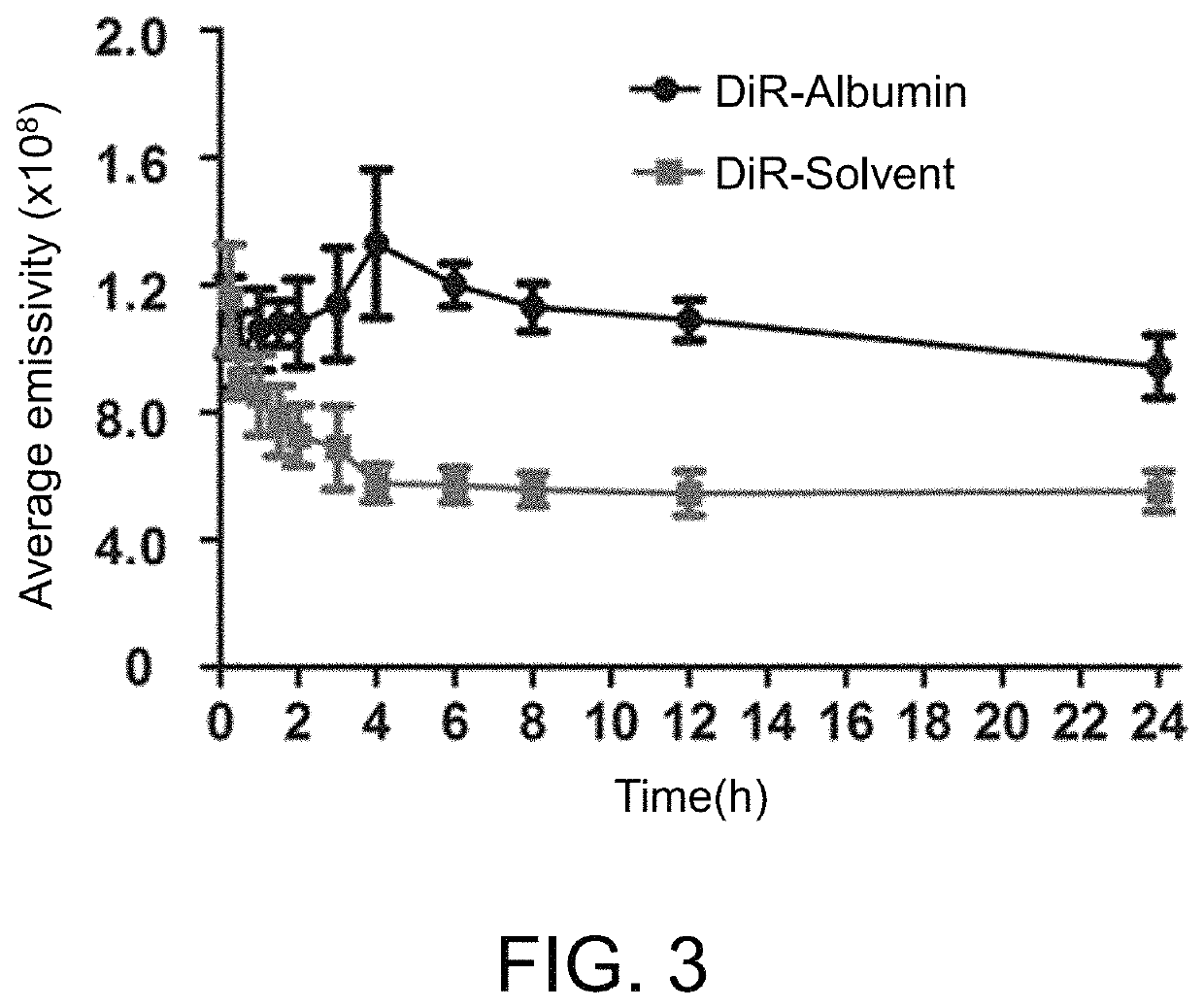Method for preparing albumin nanoparticles based on free radical oxidation
a free radical oxidation and albumin nanoparticle technology, applied in the field of pharmaceutical preparations, can solve the problems of increasing the toxicity of drugs, the thermal denaturation method is not suitable for drugs, and the organic solvent is significant, and achieves the effects of high encapsulation rate, high biological safety, and simple process flow
- Summary
- Abstract
- Description
- Claims
- Application Information
AI Technical Summary
Benefits of technology
Problems solved by technology
Method used
Image
Examples
example 1
Preparation of Bovine Serum Albumin Nanoparticles using Hydroxyl Radicals Produced by Fenton Reaction as Initiator
[0026]200 mg of bovine serum albumin (98%, 68KD, Roche) is dissolved in 10 mL of deionized water, and 1000 μL of Fenton's reagent (8.8 mM of ferrous sulfate (FeSO4) solution, 88 mM of hydrogen oxide solution and 0.1M of sodium citrate buffer solution with pH=4, the volume ratio of the three solutions is 10:1:1) is added under a water bath at 37° C. After reacting for 2 to 10 minutes, the albumin nanoparticle suspension is obtained. The above reaction processes are all carried out through stirring. The average particle size of albumin nanoparticles is 130 to 180 nm, and the Zeta potential is about −15 mV (Malvern, Zetasizer Nano ZSP).
example 2
Preparation of Bovine Serum Albumin Nanoparticles using Hydroxyl Radicals Produced by Fenton Reaction as Initiator
[0027]100 mg of bovine serum albumin (98%, 68KD, Roche) is dissolved in 10 mL of deionized water, and 500 μL of Fenton's reagent (8.8 mM of ferrous sulfate (FeSO4) solution, 88 mM of hydrogen oxide solution and 0.1M of sodium citrate buffer solution with pH=4, the volume ratio of the three solutions is 10:1:1) is added under a water bath at 15° C. After reacting for 10 to 60 minutes, the albumin nanoparticle suspension is obtained. The above reaction processes are all carried out through stirring. The average particle size of albumin nanoparticles is 180 to 275 nm, and the Zeta potential is about −15 mV (Malvern, Zetasizer Nano ZSP).
example 3
Preparation of Bovine Serum Albumin Nanoparticles using Hydroxyl Radicals Produced by Fenton Reaction as Initiator
[0028]10 mg of bovine serum albumin (98%, 68KD, Roche) is dissolved in 10 mL of deionized water, and 50 μL of Fenton's reagent (8.8 mM of ferrous sulfate (FeSO4) solution, 88 mM of hydrogen oxide solution and 0.1M of sodium citrate buffer solution with pH=4, the volume ratio of the three solutions is 10:1:1) is added under a water bath at 50° C. After reacting for 1 to 10 minutes, the albumin nanoparticle suspension is obtained. The above reaction processes are all carried out through stirring. The average particle size of albumin nanoparticles is 130 to 200 nm, and the Zeta potential is about −15 mV (Malvern, Zetasizer Nano ZSP).
PUM
| Property | Measurement | Unit |
|---|---|---|
| concentration | aaaaa | aaaaa |
| molar ratio | aaaaa | aaaaa |
| particle size | aaaaa | aaaaa |
Abstract
Description
Claims
Application Information
 Login to View More
Login to View More - R&D
- Intellectual Property
- Life Sciences
- Materials
- Tech Scout
- Unparalleled Data Quality
- Higher Quality Content
- 60% Fewer Hallucinations
Browse by: Latest US Patents, China's latest patents, Technical Efficacy Thesaurus, Application Domain, Technology Topic, Popular Technical Reports.
© 2025 PatSnap. All rights reserved.Legal|Privacy policy|Modern Slavery Act Transparency Statement|Sitemap|About US| Contact US: help@patsnap.com


